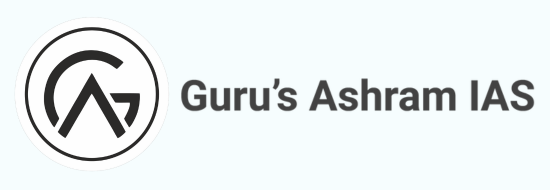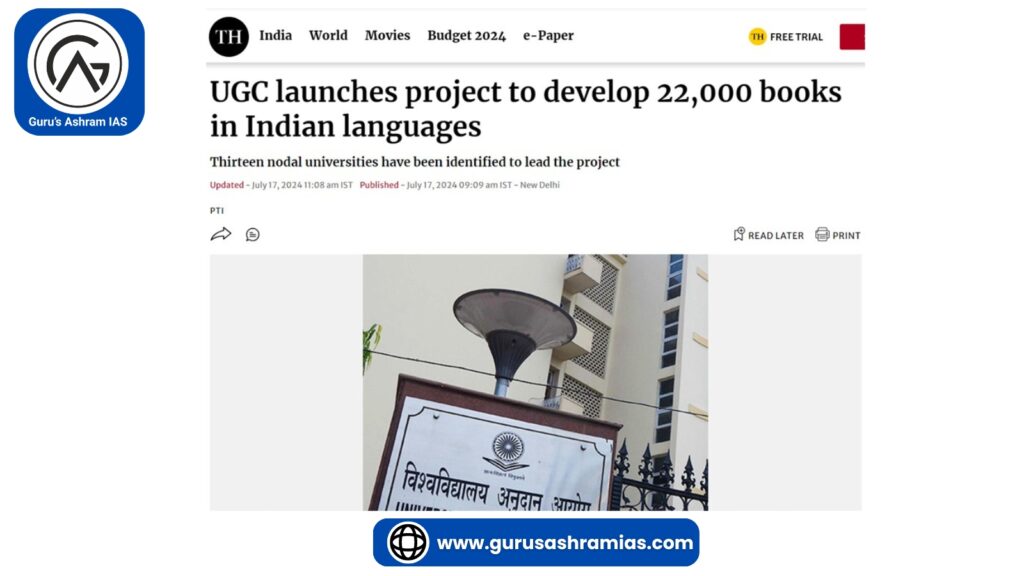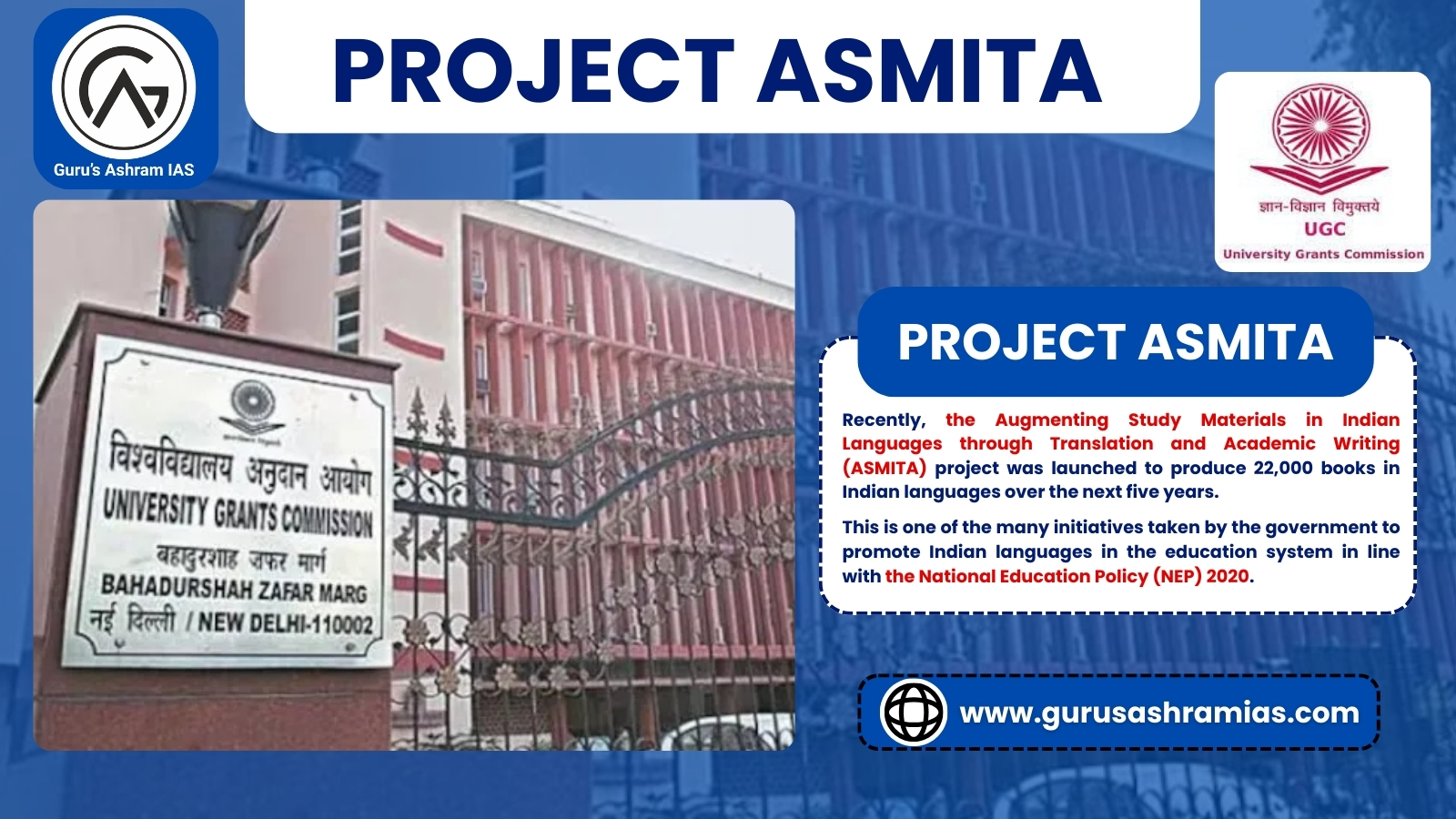Project ASMITA
- Recently, the Augmenting Study Materials in Indian Languages through Translation and Academic Writing (ASMITA) project was launched to produce 22,000 books in Indian languages over the next five years.
This is one of the many initiatives taken by the government to promote Indian languages in the education system in line with the National Education Policy (NEP) 2020.
Project ASMITA:
- It was launched by the Union Ministry of Education and the University Grants Commission (UGC).
- It is a joint effort by UGC and Bhartiya Bhasha Samiti to promote Indian languages in education.
- UGC was established in 1953 (became a statutory body in 1956) to coordinate, determine and maintain standards of teaching, examination, and research in university education.
- The Bhartiya Bhasha Samiti is the foundation committee for the promotion of Indian languages constituted by the Ministry of Education in 2021.
- 13 nodal universities have been identified along with member universities from different regions to lead this project.
- UGC has created a standard operating procedure (SOP) for the book-writing process in each specified language.
- The project aims to produce 1,000 books in 22 languages within five years, resulting in 22,000 books in Indian languages.
- In addition, the Commission aims to produce 1,800 textbooks based on Arts, Science and Commerce streams by June 2025.
Other initiatives launched with Project Asmita:
Multilingual Dictionary:
- It is a comprehensive multilingual dictionary collection developed by the Central Institute of Indian Languages in collaboration with the Bhartiya Bhasha Samiti.
- This will help in using Indian words, phrases and sentences in various modern fields like IT, Industry, Research and Education.
Real-Time Translation Architecture:
- Developed by National Educational Technology Forum and Bhartiya Bhasha Samiti, it aims to create a framework to enhance real-time translation in Indian languages.
- The NETF is envisaged as an autonomous body incorporated as a society to facilitate decision making on deployment, induction and use of technology for achieving NEP objectives.
Objectives:
- It will help create a wider pool of educational resources in 22 scheduled languages, bridge the linguistic divide, promote social cohesion and unity, and transform the youth of the country into socially responsible global citizens.
Note:
- The Eighth Schedule to the Constitution of India contains the following 22 languages:
- Assamese, Bengali, Gujarati, Hindi, Kannada, Kashmiri, Konkani, Malayalam, Manipuri, Marathi, Nepali, Oriya, Punjabi, Sanskrit, Sindhi, Tamil, Telugu, Urdu, Bodo, Santhali, Maithili and Dogri.





